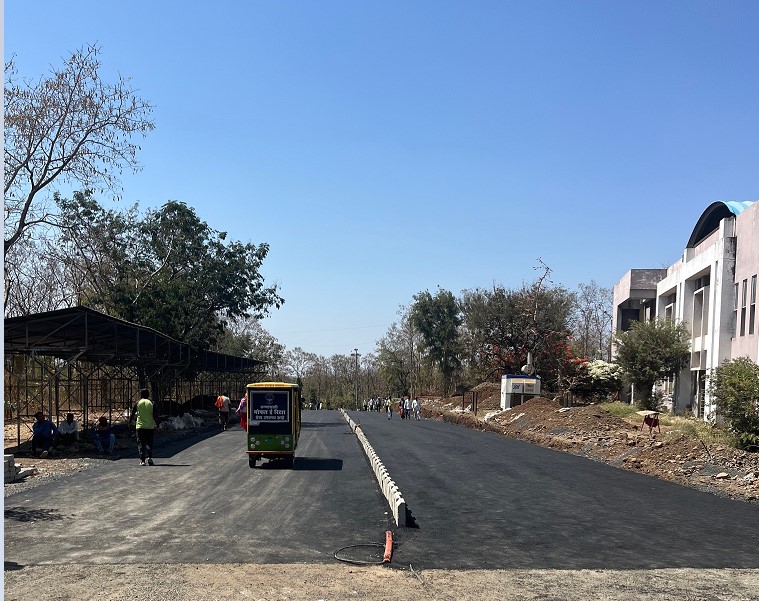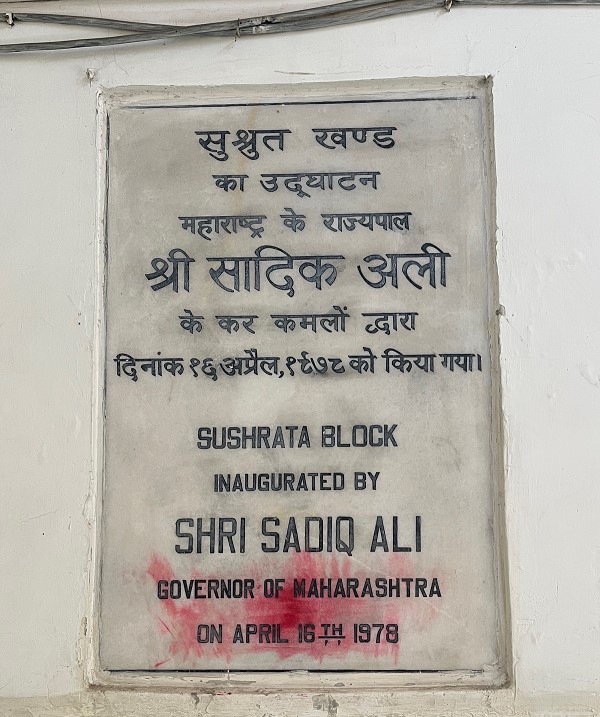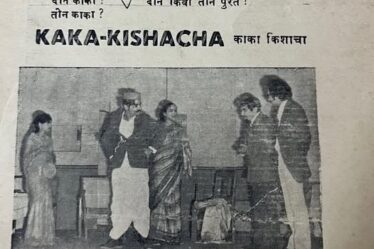
This morning, on my rounds at Sevagram hospital, I walked past the small patch of road connecting the main hospital gate to the Medicine department building where I work. Workers swarmed the area, spreading hot tar on the gravel, smoothing it with heavy rollers. Steam rose as the molten surface settled, the sharp smell of asphalt filling the air. By evening, when I returned for my evening rounds, the road gleamed black in the sun—thirty-two feet wide, broad enough for two cars in each direction, a neat row of stones dividing them. Two-wheelers, auto-rickshaws, ambulances, and cars now glided over it, making patient transport smoother than ever.
It reminded me of another road, a story Dr. Ashok Mehendale shared. Roads in Sevagram whisper tales of history, and this one, built nearly fifty years ago in the same spot, was no exception.
That road also changed Sevagram. Forty-seven years ago, in the summer of 1978, another road took shape between the student hostels and the anatomy hall. It still runs parallel to the one I’m describing. Before that, the first eight batches of medical students, from 1969 to 1977, knew only dust and a narrow footpath, worn smooth by countless footsteps as they walked from their hostels to the anatomy hall for classes and dissections.
Summer meant dust clouds that filled chappals and swirled into rooms. Monsoon turned the path into thick mud. Slippers snapped, feet sank, and bicycles had to be dragged through the slush. Luckily, few in the hostels owned scooters then—riding was impossible.
Yet, no one complained. Sevagram was a village. Who expected a tar road? Not in those days. A path was a path—kuccha or pucca, pug-dandi or paulwaat—Hindi or Marathi, it was all the same. Feet found their way. For medical students, that was enough.
Then, around the time of Holi in 1978, Sevagram began to change. The hospital was expanding uphill—new surgery wards, operation theatres, radiology, OPDs. Dr. Sushila Nayar, the indomitable MGIMS director, had made it happen. A former Union Health Minister, now an MP from Jhansi, she had the power to move mountains.
She wanted important people here. Not just anyone—the President of India, the Chief Minister of Maharashtra, and the Governor. USAID, the American aid organization, had given MGIMS the money to build everything from scratch—staff, equipment, hostels, and the hospital. Now, it was time to show it all off.
No endless letters, no bureaucratic delays. No requests to local MPs or MLAs. Badi Behenji simply lifted the phone and spoke. A direct request. And from the President, the Chief Minister, and the Governor, the reply came swiftly—”Yes.” They all agreed to the third week of April.
That Sunday, April 16th, 1978, dawned with Sevagram holding its breath. The President, Neelam Sanjiva Reddy; the Chief Minister, Vasantdada Patil; and the Governor, Sadiq Ali—all three landed at Nagpur airport. A procession of fifty white Ambassadors, a sight Sevagram had never witnessed, flowed like a river toward the quiet village. The OPD block, the operation theatres, the radiology department, the surgical wards—all stood ready and waiting. Plaques gleamed under the morning sun. Doctors, nurses, paramedics, and the 60 students of the class of ’76 stood waiting in their appointed places, a mixture of anticipation and nervous energy in the air. Badi Behenji, then 62, was visibly happy, though a touch of anxiety lingered. Principal ML Sharma paced nervously, his eyes glued to his wristwatch. The students, meanwhile, buzzed with excitement—they had never seen the President of India in person.

It was a momentous day.
But there was a problem. Sevagram was about to host the President of India, but it had no proper road for his motorcade.
Within a fortnight, the famously tight-fisted accounts department loosened its grip on the purse strings, a contractor materialized seemingly out of thin air, and work commenced. Day and night, the old, dusty, bone-jarring path was ripped up and replaced with a gleaming ribbon of black tar, smooth as silk. Just in the nick of time, the road was ready. On the momentous day, not one or two, but dozens of gleaming Ambassadors glided over it, without a single bump or jolt. The medical students, for the first time, arrived without dust coating their nostrils.
The road had done its job.
Fast forward to today. Another road is born in Sevagram. And as I watch, I recall all the roads that have come before. Each one whispers a tale—of dust and mud, of VIPs, of Badi Behenji, and of the slow, steady rhythm of change.
These roads are more than just asphalt and tar. They are Sevagram. They are our memories. They are our history.

He was my Aadhiguru/senoir colleague. I was a lecturer in Physiology under him in MGIMS,Sevagram..1971-1973.